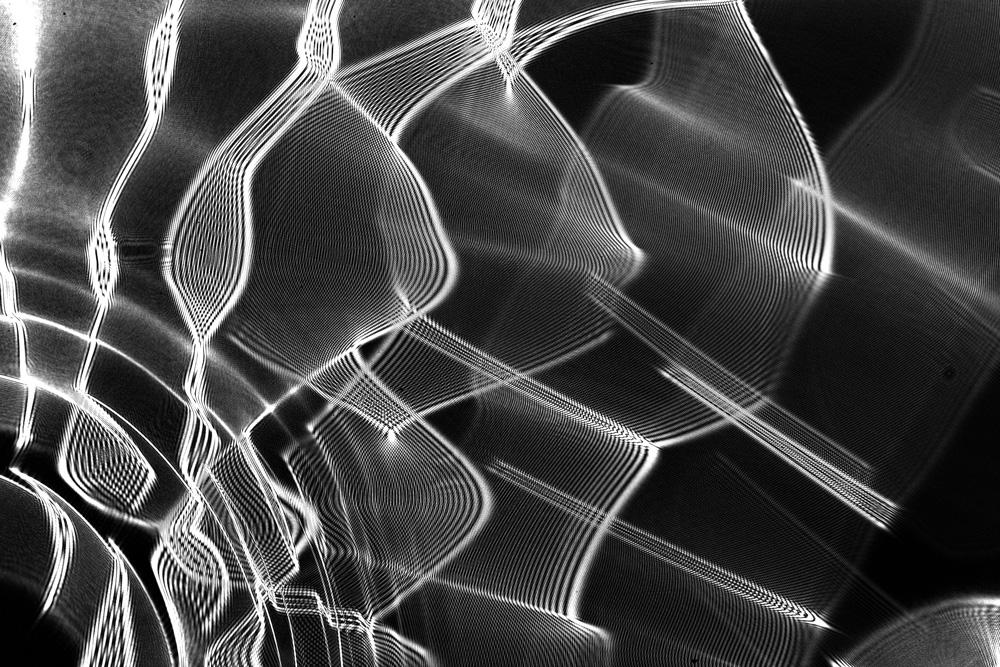
Student in the Field: What Lies Beneath
Charles E. Schmidt College of Science and Harbor Branch Oceanographic Institute
Captured during a research cruise in Finland, this image reveals the intricate light scattering patterns as the AUTOHOLO, a custom-built autonomous submersible holographic microscope, descends into the frigid waters of the Baltic Sea. Designed to capture high-resolution, in situ holograms of marine particles and plankton, the AUTOHOLO uses a laser beam to illuminate the volume of interest and records the resulting interference patterns with a camera. Post-processing using machine learning based algorithms facilitates species classification, unveiling details on plankton distribution, abundance and behavior within a 3-D sample volume. Plankton, complex microscopic plants and animals at the base of the marine food web, are critical to ocean ecosystems, supporting the entire aquatic food chain and influencing nutrient cycles. Quantifying abundance and distribution of plankton in the world's oceans at high resolution enables us to address important marine ecological questions as well as understand how climate change is influencing marine ecosystems. The comprehensive view provided by these holograms reveals behaviors and interactions that would remain hidden with traditional 2-D methods. This image, representing patterns caused by light scattering, was recorded as the AUTOHOLO pierced the air-water interface, plunging into the dark waters, poised to unravel the secrets of the fascinating invisible planktonic world.